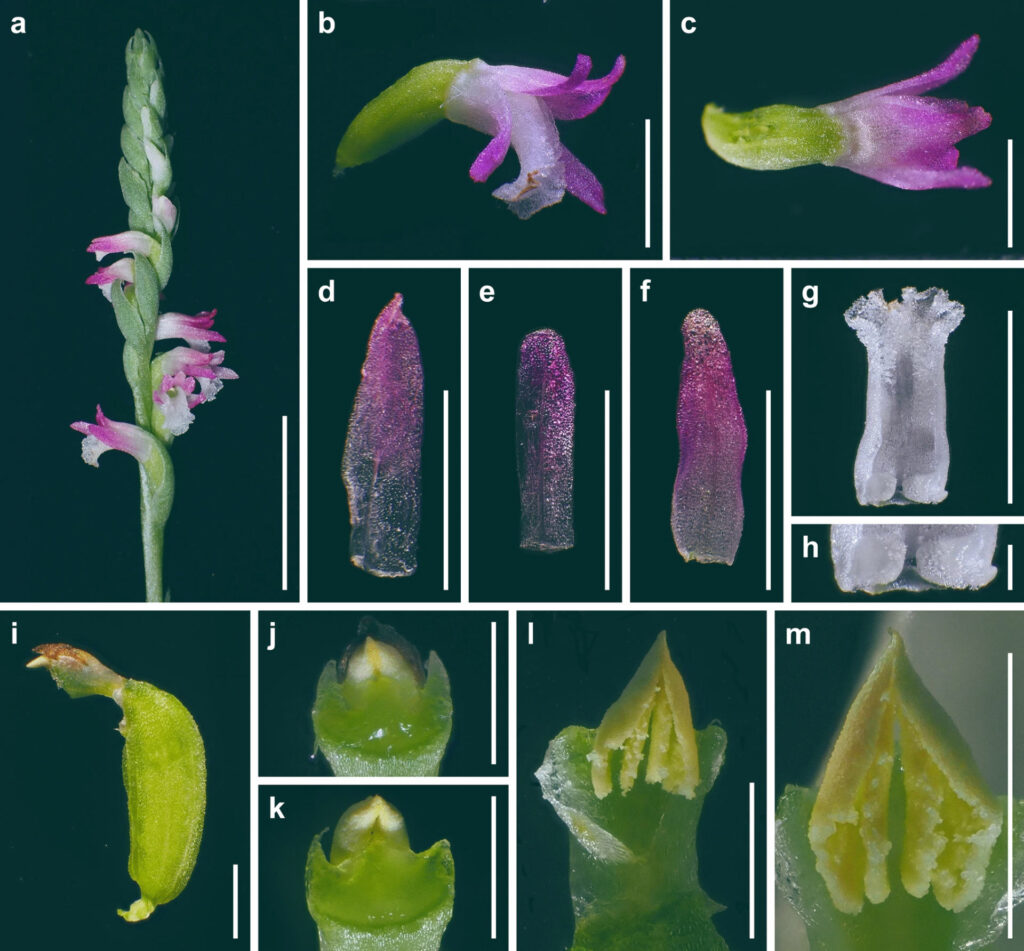Each year, research institutes work together to publish lists of hundreds or even thousands of plant and animal species that have vanished irreversibly due to careless human behaviour. That is why it is even more encouraging that now and then we hear about life we did not know about before – I am referring to the recent inclusion of a previously unknown orchid species – Spiranthes hachijoensis – in the general taxonomy. The discovery was made by Japanese scientists.
Knowledge of the nature of the “hosts of the planet”
From the first botanical and zoological studies by Aristotle through the classification of living organisms by Linnaeus to Darwin’s theory of evolution and the contemporary application of the latest technologies in studies of biodiversity – mankind always thought it knew everything there is to know about life on Earth. We look around and don’t see any species as developed as us, and we tend to regard ourselves as the only masters of the planet Earth. This is true, there are good reasons to think so, but nature is still nature and – even in the 21st century – it keeps surprising us again and again.
We are living in the Anthropocene era, where there is not a single square metre of the globe that has not been explored in every way by the watchful eye of the satellites. We are looking high and low, but it turns out that real biological discoveries may be hidden right next to us.
One of the examples proving our ignorance of nature is the discovery made by Japanese scientists of a new plant that – as it turns out – was found in our immediate surroundings.
The previously unknown species of orchid, now referred to as Spiranthes hachijoensis, is fairly common even among the urban vegetation of many Asian countries.

Image credit: Suetsugu et al., doi: 10.1007/s10265-023-01448-6.
Spiranthes hachijoensis is a reason for joy
In our oldest film chronicles, we can still find black-and-white recordings of the proud and beautiful sabre-toothed tiger. This magnificent animal died at our hands. Just like thousands of other species that future generations will never get to see. (Did you know that just 80 years ago, there were enormous, wonderful specimens of the majestic sturgeons swimming in the Polish Vistula River?).
That is why the discovery of each new species is so exciting. The news of the discovery of the Spiranthes hachijoensis orchid is a reason for joy for anyone interested in the fate of nature on Earth. It convinces us that there are still unexplored regions of the biosystems, that our knowledge cannot claim to be complete. It is a challenge for every explorer, and it is the greatest honour to discover a species that has not been described and studied, surprising us with its specific characteristics. Some of us can even regard such events as being just as important as the discovery of simple microbes outside the Earth’s atmosphere – we can see that not everything is over and done with, not everything has been explored, even in our immediate vicinity, we can find parts of ecosystems that complete the great “puzzle”, helping to unveil the full image of life on Earth – parts of the great chain of living beings, appearing long before mankind and without its involvement, without which the whole picture loses a lot of its magnificence.
New orchid species – what makes it different?
We found something big. Spiranthes hachijoensis is unique. Although orchids of the Spiranthes genus are fairly common in Japan, this species has properties that have not been encountered so far.
Around the main stem, it has very fine, exquisitely arranged flowers, which seem to be climbing the stem, forming something resembling a spiral structure. These flowers can have many different colours: yellow, purple or pink. Attempts are being made to determine the exact genetic make-up and behaviour of Spiranthes hachijoensis, helped by the materials gathered in Laos and Taiwan, where these orchids have also been found. It is highly surprising that, although we now know that the new orchid belongs to the Spiranthes genus, it is the only such orchid without hair on the stem – its stem is smooth. Another unique feature is the flowering time – approximately one month earlier than its closest cousins, which means that the reproduction process is also new to us, it is unlike that of the other orchids.
Will we keep discovering new species?
Orchids are a very large family, spread all over the world, so the discovery of another orchid will offer new knowledge of nature but won’t be a major breakthrough in biology or ecology. Our knowledge will enable us to effortlessly include the new Spiranthes in the taxonomy, the flower will be carefully tested and described in every detail.
Unfortunately, such discoveries are rare. If they recur in the future, they should be expected to happen in the Amazon first, which – despite the predatory exploitation by the previous president of Brazil, Bolsonaro – may still hide some real secrets. The second place where we might still find some unknown species are the depths of the oceans. But – and this is sad – that’s probably it. The discovery of a new species (and something like this happens every few years and is very rare) cannot be compared to the extinction of thousands of species (each year!) of plants and animals, the natural heritage of the planet Earth, which is irrevocably lost…
Maciej Skomorowski












